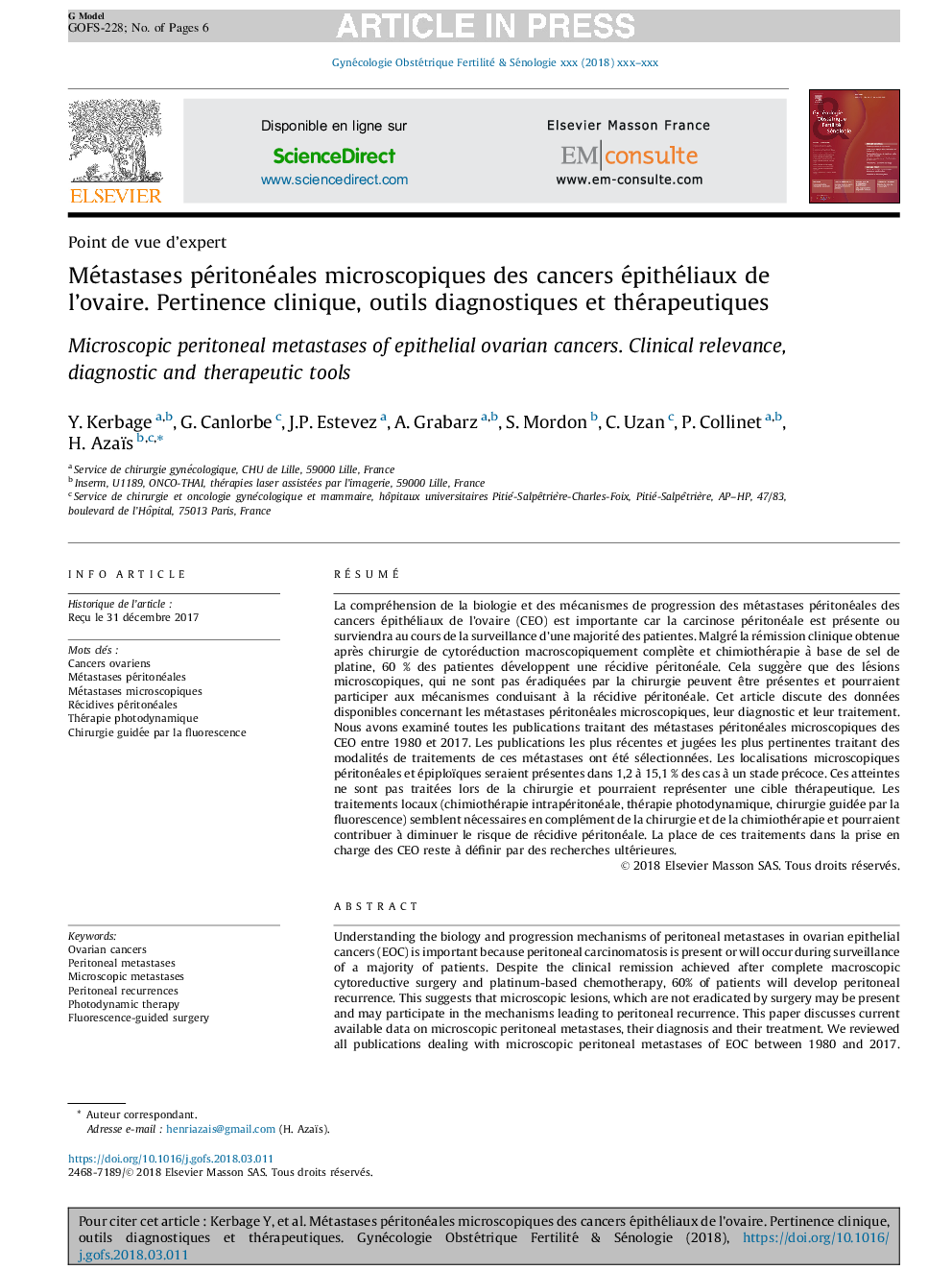| Article ID | Journal | Published Year | Pages | File Type |
|---|---|---|---|---|
| 8926227 | Gynécologie Obstétrique Fertilité & Sénologie | 2018 | 6 Pages |
Abstract
Understanding the biology and progression mechanisms of peritoneal metastases in ovarian epithelial cancers (EOC) is important because peritoneal carcinomatosis is present or will occur during surveillance of a majority of patients. Despite the clinical remission achieved after complete macroscopic cytoreductive surgery and platinum-based chemotherapy, 60% of patients will develop peritoneal recurrence. This suggests that microscopic lesions, which are not eradicated by surgery may be present and may participate in the mechanisms leading to peritoneal recurrence. This paper discusses current available data on microscopic peritoneal metastases, their diagnosis and their treatment. We reviewed all publications dealing with microscopic peritoneal metastases of EOC between 1980 and 2017. The most recent and most relevant publications dealing with the treatment modalities of these metastases were selected. Peritoneal and epiploic microscopic localizations would occur in 1.2 to 15.1% of cases at early-stage and are not treated during conventional surgery. They could represent a potential therapeutic target. Local treatments (intraperitoneal chemotherapy, photodynamic therapy, fluorescence-guided surgery) seem to be necessary in addition to surgery and chemotherapy and may help reduce the risk of peritoneal recurrence. The place of these treatments in the management of EOC remains to be defined by subsequent researches.
Keywords
Related Topics
Health Sciences
Medicine and Dentistry
Obstetrics, Gynecology and Women's Health
Authors
Y. Kerbage, G. Canlorbe, J.P. Estevez, A. Grabarz, S. Mordon, C. Uzan, P. Collinet, H. Azaïs,
